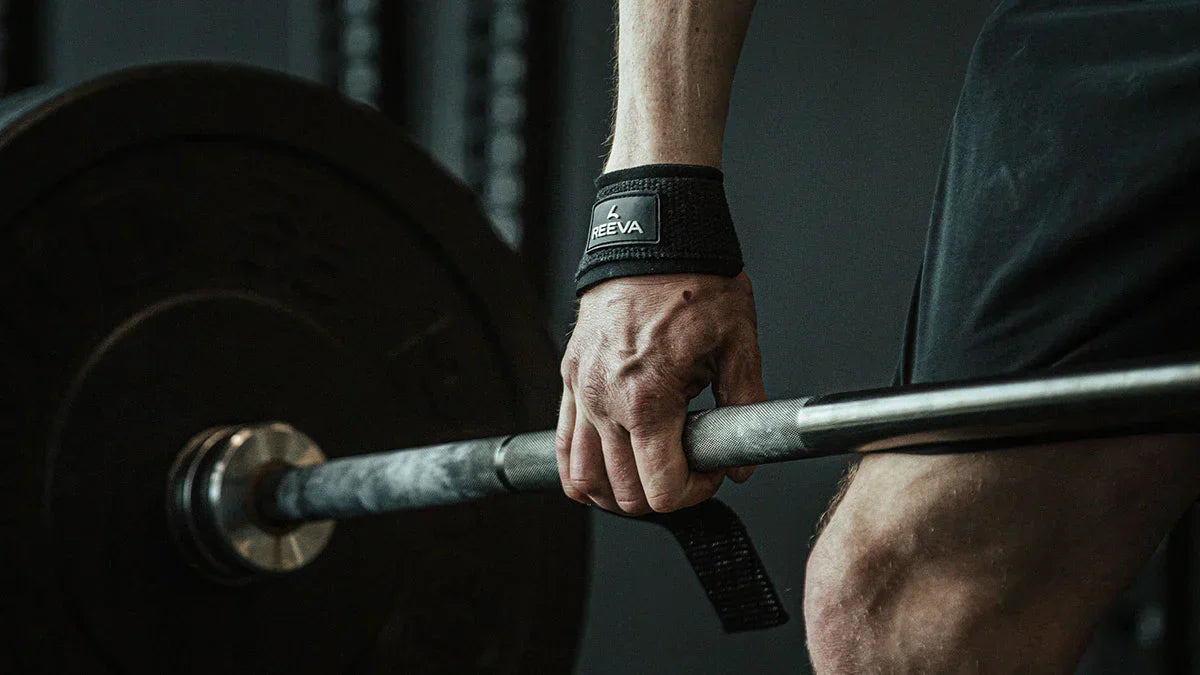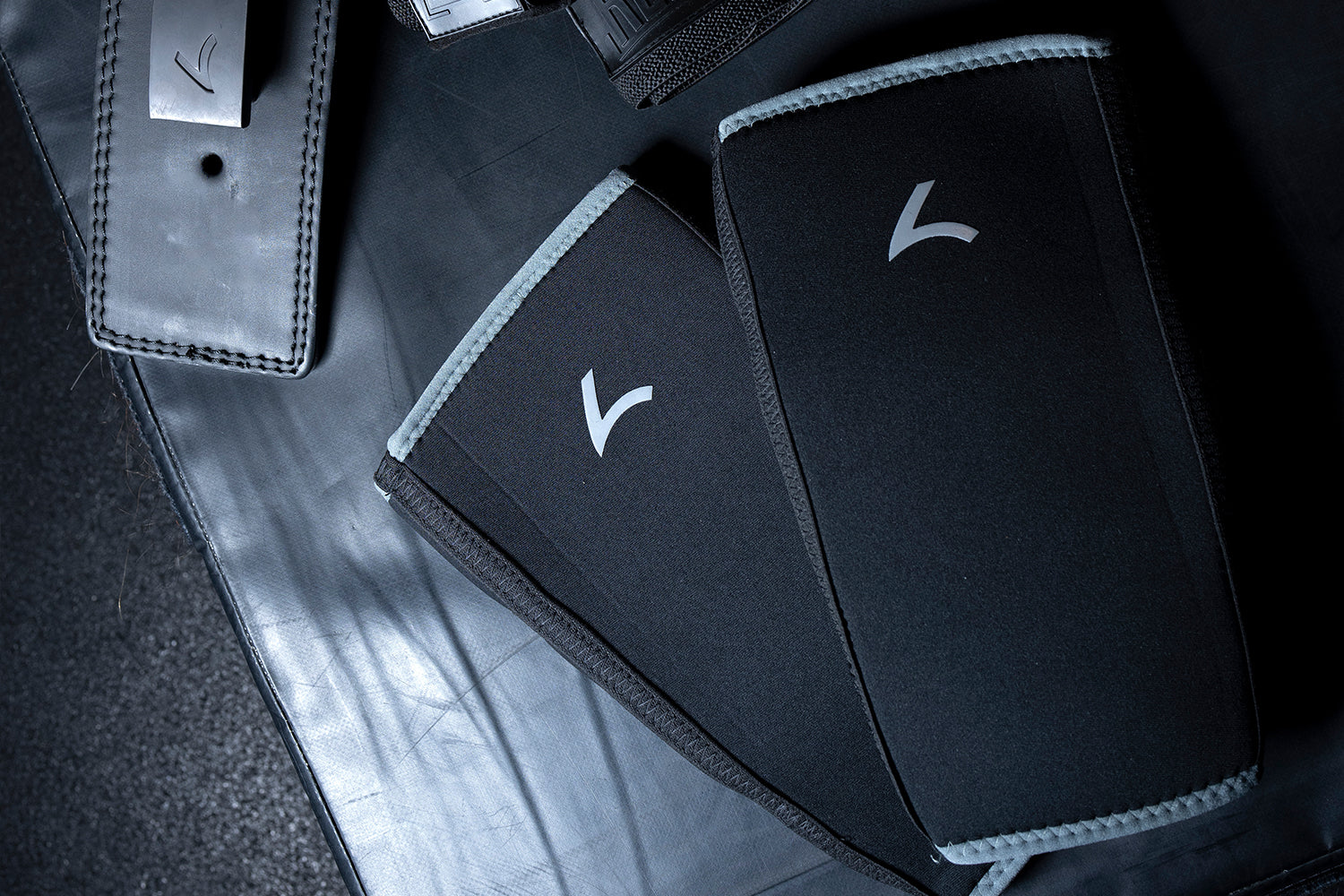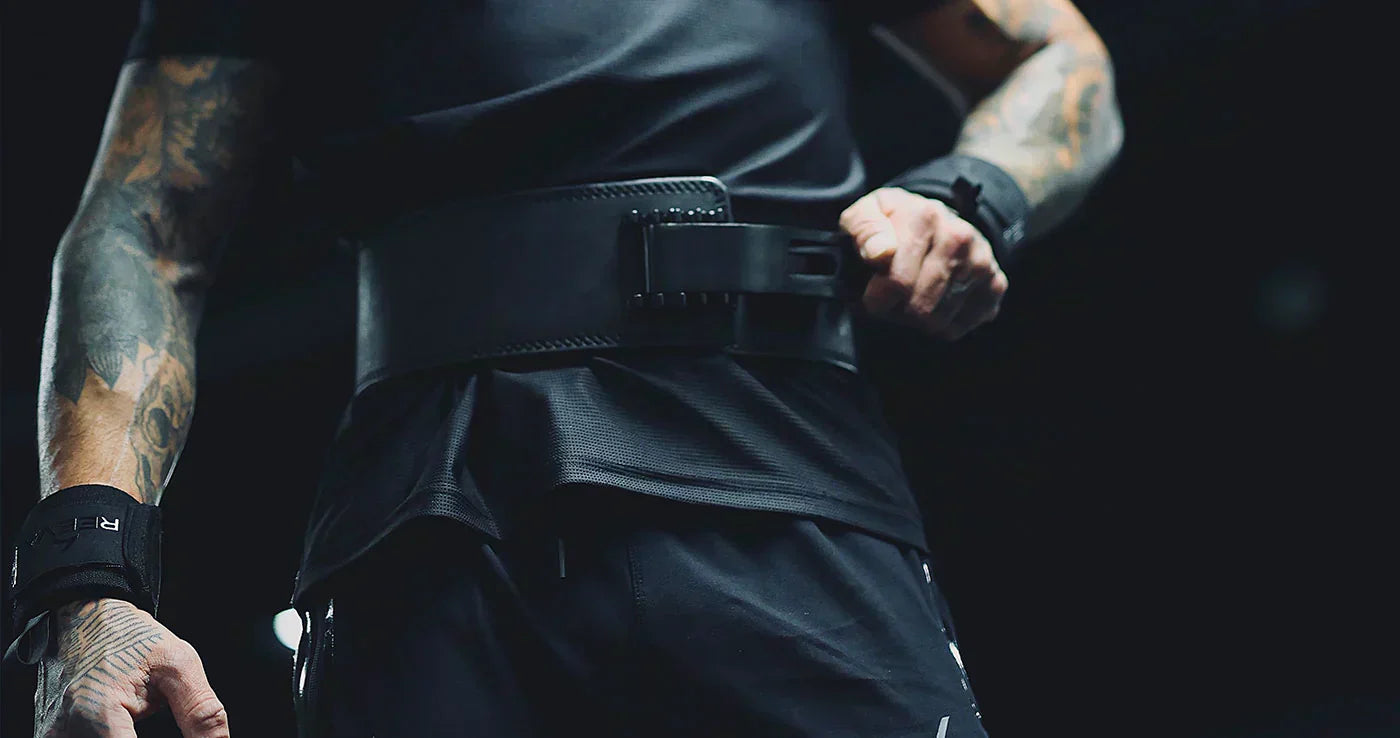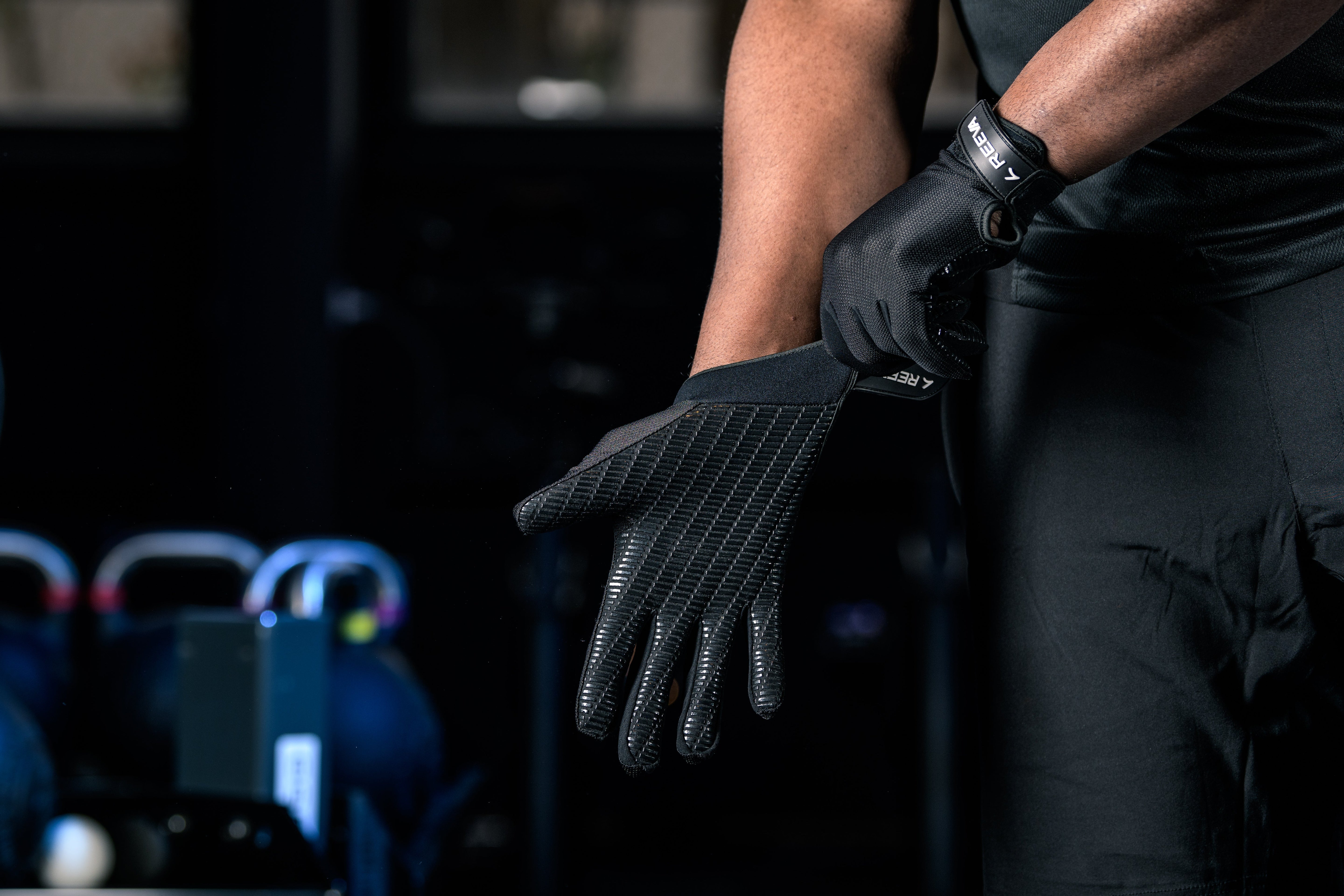If you've ever felt your grip give out before your back or hamstrings during deadlifts, you’re not alone. Grip fatigue or sweaty, small hands can cause the bar to slip, cutting your sets short. Lifting straps are a simple solution and they basically attach your hands to the barbell, so you can hold on and keep lifting when your grip would otherwise fail. This beginner’s guide will explain what lifting straps are, why and when to use them, and provide a step-by-step tutorial (with images) on how to properly strap in for deadlifts and other pulling exercises. We’ll also cover when to strap in during a set and key safety tips to use lifting straps effectively and responsibly.
What Are Lifting Straps?
Lifting straps (also called wrist straps) are strips of strong material – typically cotton, nylon, or leather – that loop around your wrist and the barbell to reinforce your grip. One end of the strap is sewn into a loop that goes around your wrist, and the long free end wraps around the bar. By cinching the strap tight, it effectively binds your hands to the bar, preventing it from sliding out of your grip during heavy lifts. These straps are exceptionally useful for deadlifts or other heavy pulling exercises where grip can be a limiting factor.
Most lifting straps have a basic design: a loop on one end (through which you feed the strap to tighten around your wrist) and a long tail. There are a few variations (lasso straps, figure-8 straps, lifting hooks, etc.), but in this guide we’ll focus on the common lasso-style lifting strap since it’s beginner-friendly and widely used.

Why Use Lifting Straps? (Benefits)
Using lifting straps allows you to lift heavier and longer by alleviating the strain on your hands. Here are the key benefits:
-
Stronger Grip on Heavy Weights: Straps support your grip by literally securing your hands to the bar, so your fingers don’t have to do all the work. This means you can hold onto weights that would normally slip due to sweat, small hand size, or just limited grip strength. By reducing grip fatigue, straps let you focus on the target muscles (like your lats, traps, or hamstrings) without worrying about dropping the bar.
-
Lift More Weight & Do More Reps: With a better grip, you can potentially lift heavier weights than you could with bare hands. Your large muscle groups (back, legs) can be trained to failure without your grip giving out first. In other words, straps help ensure your grip isn’t the weak link holding back your deadlift or row progress. This can lead to increased strength gains and faster progress.
-
Enhanced Safety: By preventing the bar from slipping, lifting straps also improve safety. If you’re handling near-max loads, a failing grip could drop the weight – straps reduce that risk. They help prevent accidents or injuries from a barbell falling mid-lift due to grip loss. (Of course, you should still use proper form and safe lifting practices at all times.)
-
Better Muscle Balance: Often, one hand’s grip is weaker than the other. Straps ensure both sides of your body work evenly by eliminating grip disparity. This way, you’re not ending a set early because one hand couldn’t hold on, which can help prevent muscle imbalances in your back and arms.
In short, lifting straps are a useful tool to maximize your performance on pulling exercises once your grip becomes a limiting factor. Many top lifters, from bodybuilders to strongmen, use straps in training to push their big lifts further – even if they can’t use them in competition. As one of our coaches puts it, “straps allow us to lift more than we could without them, both in weight and volume, by ensuring grip doesn’t limit our training”.
When to Use (and NOT Use) Lifting Straps
Beginners: If you are new to lifting, you actually should hold off on using straps right away. In the early stages, your weights are light enough that your grip can manage, and it’s important to build your natural grip strength and technique first. There is no need for a novice to use straps until the weights get challenging for your grip. In fact, one Olympic lifting coach says “there is absolutely no need for beginners to use straps… They’re not operating anywhere near their physical limits”. So, spend your first few months (or even years) developing a solid grip and only consider straps once you notice grip is truly holding you back.
Use Straps Only When You Need Them: Eventually, as you progress, you’ll reach weights or high-rep sets where your grip becomes the limiting factor. A classic example is when deadlifting near your max or doing high-rep barbell rows – your back and legs could handle more, but your hands give out. That’s the time to strap in. As one lifter notes, “If you notice your grip giving out during the middle of a deadlift or barbell row set, it might be time to consider using lifting straps.” In practical terms, you might do your warm-up sets with bare hands, and once you get to a weight that causes grip struggle (say the last one or two heavy sets), you put on the straps for those sets. For example, some lifters will go strap-free until they surpass a certain weight (e.g. 400 lbs deadlift), then use straps for all sets beyond that.
-
During a Set: You should strap in before you start the set – you can’t really put straps on mid-set. So decide in advance if a given set likely needs straps. If it’s a personal record attempt or a high-rep burnout set where you know grip might fail, take the time to strap up before the first rep. Once strapped, you’ll perform the entire set with the straps on. (If you find mid-set that you didn’t need them, no harm done, but generally you only use straps when you expect to need the extra hold.)
When Not to Use Straps: Do not rely on straps for every set or every exercise – use them in moderation. Aim to use straps only on the heaviest sets or most grip-taxing sets, and do your lighter work without them. By limiting strap use to when it’s truly needed, you still get to train and improve your grip on other sets. If you were to strap up on every single set, your grip strength might lag behind over time. A good rule of thumb: “Use them only when your grip is hindering your performance; all other times, don’t.”
Moreover, there are certain movements and situations where straps are not recommended:
-
Not for Explosive Olympic Lifts: Avoid using straps on exercises like power cleans or snatches (especially as a beginner). If something goes wrong during a clean or snatch, you need to let go of the bar quickly – but straps will keep you attached, potentially causing wrist or arm injuries. (Advanced Olympic weightlifters do sometimes use straps for high-pull drills or very heavy snatch pulls, but this is done with caution and experience. For general lifters: steer clear of straps on quick lifts.)
-
Not for Pressing Movements: Straps are meant for pulling exercises where grip might slip. Using straps on presses (bench press, overhead press, etc.) is pointless – your grip isn’t the limiting factor in a bench press, and the direction of force is into your hands, not away. In fact, seeing someone strap their hands to a bench press bar is a bit of a gym joke (since gravity isn’t trying to pull the bar out of your hands in a press). Stick to using straps for pulling motions (deadlifts, rows, pull-ups, lat pulldowns, shrugs – basically any time you must hold a weight against gravity).
-
Not in Competitions: If you plan to compete in powerlifting or Olympic lifting, note that straps aren’t allowed in most competitions for lifts like the deadlift or clean. So you should still train your raw grip for those one-rep max scenarios. For instance, a powerlifter might do their high-rep training sets with straps, but do their competition-style heavy singles without straps to keep the grip strong.
In summary, wait as long as possible before introducing straps, use them on your heaviest or most demanding pulling sets, and avoid using them when they’re not appropriate. This balanced approach lets you reap the benefits of straps without becoming overly dependent on them. Next, we’ll cover how to correctly put on and use lifting straps step by step.

Step-by-Step: How to Use Lifting Straps (for Deadlifts & Rows)
In a nutshell, using lifting straps involves looping one end around your wrist and wrapping the other end around the bar, then tightening it up. Below is a step-by-step guide with images for a typical lasso-style lifting strap. Practice this process with an empty bar or light weight first, so you get comfortable with the technique before using them on a very heavy lift.
-
Create a Loop around Your Wrist: Start by feeding one end of the strap through the small loop on the opposite end, creating a larger loop. Put your hand through this loop so the strap wraps around the base of your hand/wrist. Pull the strap until the loop snugly tightens around your wrist (not so tight that it cuts off circulation, but secure enough that it won’t slip). Ensure that a good length of the strap (the “tail”) is hanging free – usually ~8–10 inches of tail through the loop is ideal, leaving enough material to wrap around the bar. The strap should lie flat against your skin without twists, and position it so that the free end aligns with the inside of your hand (toward your thumb). This alignment matters: the strap hanging in line with your thumb will wrap correctly around the bar in the next step.
-
Insert Hand and Position Strap: With the loop tight on your wrist, open your hand and lay the free end of the strap across your palm. If you set it up as above, the strap will run from the pinky side of your wrist across your palm and out between your thumb and index finger. Grip the barbell as you normally would, with the strap laying along the bar. At this point, one end of the strap is attached to your wrist and the other end is just resting over the bar. Make sure your hand placement on the bar is correct (usually shoulder-width for deadlifts, etc.) before you begin wrapping. It’s often easiest to strap your non-dominant hand first – for example, if you’re right-handed, put the strap on your left hand and set it on the bar, so that you can use your right (dominant) hand to help wrap the left strap.
-
Wrap the Strap Around the Bar: Now use your free hand (the one not yet strapped) to start wrapping the strap under and around the bar. Rotate the loose end around the barbell, looping it tightly. The strap should go over the top of the bar and then under it, circling around in the direction toward your thumb. As you wrap, keep tension on the strap so each layer is snug with no slack. You can wrap it around the bar 1–3 times depending on the strap’s length and your preference. (Reeva straps, for instance, are slightly longer at 61 cm to allow a couple of wraps for a very secure hold.) One or two wraps is usually sufficient – you don’t need to use the entire strap if there’s excess; any leftover tail can just hang or be tucked under the wrapped portion. The goal is simply to have the strap firmly coil around the bar, binding your hand to it. Once your first hand’s strap is wrapped, grip the bar over the strap to keep it in place.
-
Tighten and Secure Your Grip: With one hand strapped to the bar, repeat the wrapping process for your other hand. This is a bit tricky with one hand already attached – you might have to use finger dexterity to thread the second strap. An effective method is to roll the bar toward you with the first hand, which helps tighten that strap, and simultaneously use your free hand’s fingers to wrap its strap around the bar. Once both hands are strapped, take a moment to set them equally tight: you can rotate the bar back and forth slightly to cinch both straps down until there’s no slack. Your wrists should feel securely tethered to the barbell. Now grip the bar firmly over the straps with both hands. At this point, the bar should be locked in with your hands – if you try to lift gently, the bar should move as part of your arms without slipping out. You are now ready to perform the lift. Keep your wrists straight and maintain your normal lifting form (straps don’t change your deadlift mechanics, they just assist your grip).
After completing your set, release the straps by simply letting go of the bar – open your hands and the bar will roll, loosening the straps. You can then unfurl the strap tail from the bar and slide your hands out. It might take a little practice to get fluid at strapping in and out, but after a few workouts it will become second nature. Don’t get discouraged if it feels fiddly at first – focus on wrapping tightly and evenly, and you’ll quickly get the hang of it.
Safety Tips for Using Lifting Straps
Lifting straps are very useful, but there are some important safety guidelines and best practices to keep in mind:
-
Use Straps Sparingly (Don’t Become Dependent): Straps are a tool to help with your heaviest pulls – not something to use on every set. Over-relying on straps for all your lifting can cause your grip strength to stagnate. Remember to still train your grip by doing as many sets as you can without straps, especially as a beginner. In other words, use straps in moderation and don’t rely on them for all heavy lifting. This way, you get the best of both worlds: you develop a strong natural grip, and you have straps to assist when you really need them.
-
Only for the Right Exercises: As mentioned, only use straps for pulling exercises where gravity is trying to rip the weight out of your hands. Deadlifts, rack pulls, barbell and dumbbell rows, weighted pull-ups or chin-ups, lat pulldowns, cable rows, shrugs – these are all fine for straps. Do NOT use straps for presses (bench press, shoulder press) or any lift where the weight isn’t dropping out of your hands – it’s unnecessary and could even be dangerous if you somehow got stuck. Also, avoid using straps for dynamic Olympic lifts like cleans or snatches unless you’re an expert; straps can trap you during a missed lift and lead to injury. Keep straps as a helper for heavy pulls, not as a crutch in every scenario.
-
Always Wrap Snug and Secure: When strapping in, take the time to wrap the strap tightly around the bar. A common mistake is leaving the strap too loose, which defeats the purpose and can slip or shift mid-lift. If the strap isn’t tight, you won’t get the support and grip assistance you need, and it could put extra pressure on your wrists due to sliding. So make sure to cinch the straps down firmly before you lift – no slack in the wraps. If you start a pull and feel the strap shifting, set the weight down and readjust. It’s worth a moment to re-wrap rather than risk a strap failure during a max effort.
-
Maintain Proper Form: Don’t let the confidence from using straps compromise your technique. Straps help your grip, but you must still lift with good form – a strapped deadlift can still injure your back if done poorly. Also, do not ignore pain or discomfort in your wrists or hands when using straps. If something hurts, stop and check your strap positioning (it might be pinching or too tight). Straps should feel secure but relatively comfortable (many have neoprene padding to protect your wrists). If you feel sharp pain, you may have wrapped incorrectly or need to adjust the fit.
-
Be Prepared to Let Go: In an emergency (say you feel a sharp pain or a lift gone wrong), remember that you can release a strapped bar by opening your hands. The bar will drop and the straps will unwrap if you truly let go. Mentally note this so you don’t panic – you are not permanently attached to the bar. That said, because straps do delay your ability to dump a weight, it’s wise to be extra cautious on exercises like rack pulls or RDLs when using straps (use safety pins/blocks to rest the bar if you fail a rep, rather than trying to crash it down).
-
Inspect Your Straps: Finally, treat your lifting straps like any other equipment – check them for wear and tear. Over time, the material can fray or weaken. A strap breaking under a heavy load could be dangerous (suddenly dumping one side of a bar). So, if your straps are looking beat up or the stitching is coming apart, replace them. They’re not expensive, and a fresh pair is cheap insurance for your safety.
By following these tips, you’ll ensure that you use lifting straps safely and effectively as a tool to enhance your training, rather than a crutch. Always prioritize good judgment and proper form first – straps just assist your grip, but you’re still lifting the weight with your body.
Conclusion: Master Your Grip and Lift Heavy with Confidence
Lifting straps can be a game-changer for your pulling exercises once you know how to use them correctly. They let you focus on blasting your target muscles without your grip calling it quits early. For beginners, learning to strap in properly means you can start confidently adding weight to your deadlifts, rows, and pull-ups when your grip strength would otherwise limit you. Just remember to use straps wisely – build your raw grip strength too, and save the straps for when you truly need that extra hold.
Finally, choosing a quality pair of lifting straps will make a big difference in comfort and performance. For example, Reeva’s lifting straps are made of durable cotton and are slightly longer (61 cm) than standard straps, allowing you to wrap the bar more times for a super secure grip. They also feature foam padding on the inside for wrist comfort and a silicone printed grip that adds friction to prevent slipping. These kinds of design features make Reeva’s straps a beginner-friendly option to improve your grip on heavy lifts while keeping your wrists supported. With the step-by-step guide and tips above, you’ll be strapping in like a pro and hitting new personal records in no time – grip strength no longer holding you back!






